Abstract
Biomechanical testing of connective tissue is usually done on whole tissue. Studies of the mechanical properties of each component of the tissue, however, are important for elucidating the connection between the functional properties and the molecular structure. Enzymic degradation of one component at a time followed by mechanical testing was employed. The specificity of enzymes used was ascertained with mechanical tests on collagen films from purified, reconstituted collagen after enzymic treatment. The study shows that collagen is the component which is mainly responsible for the tensile strength of skin and aorta, while the toe-part of the 'stress'-strain curve of aorta is determined by both elastin and collagen. The hyaluronic acid does not seem to play any role in the static mechanical properties of skin and aorta as evaluated by means of the present method.
Full text
PDF

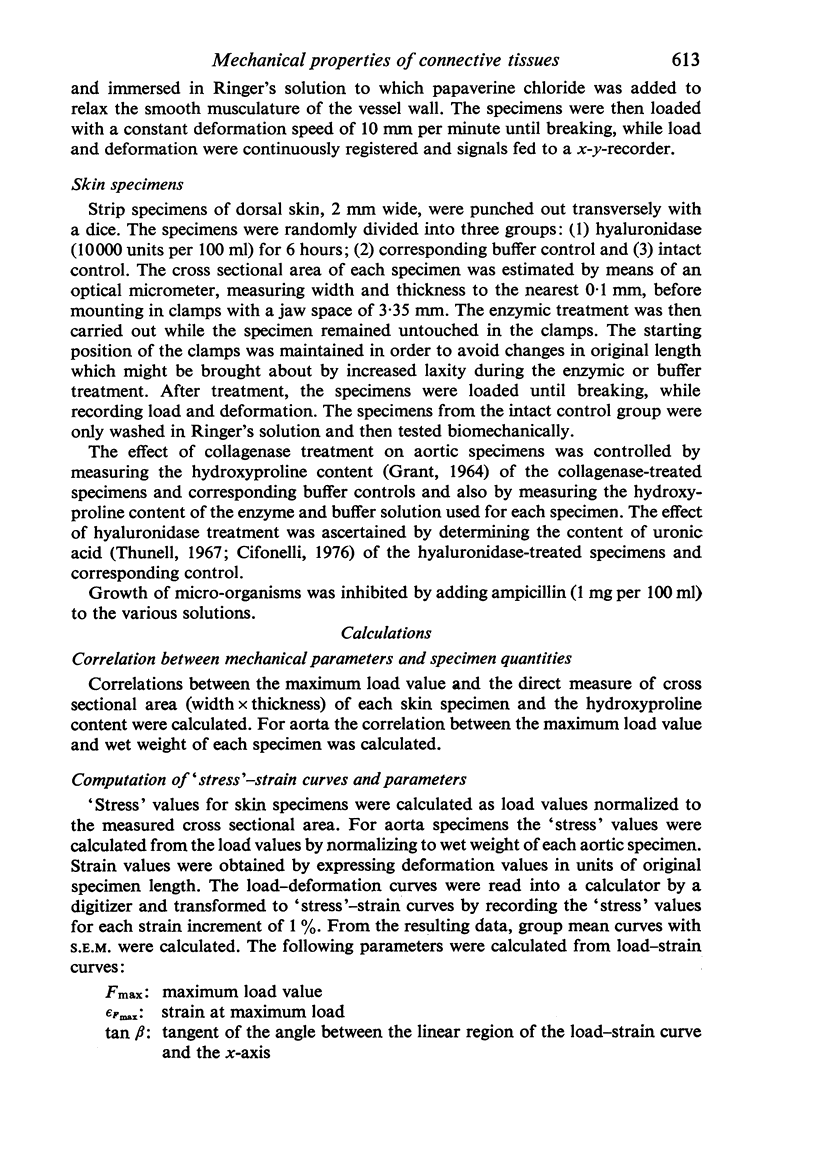
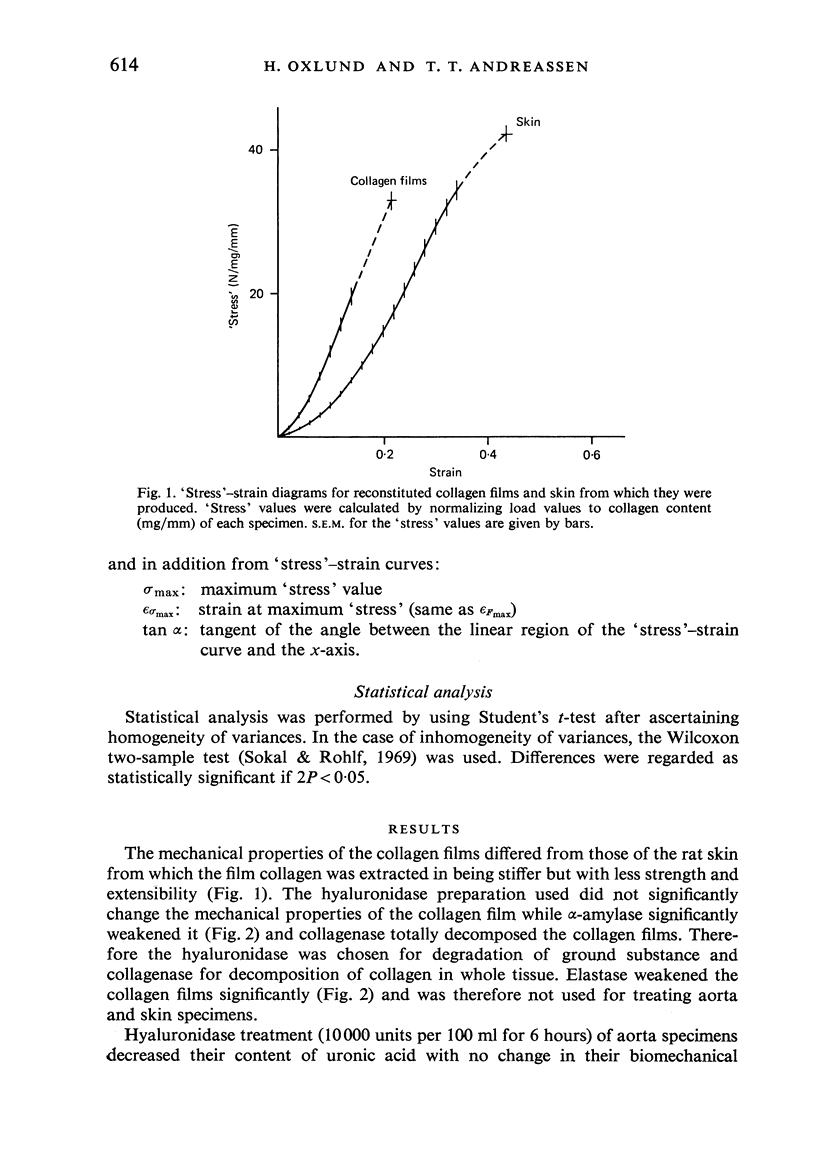

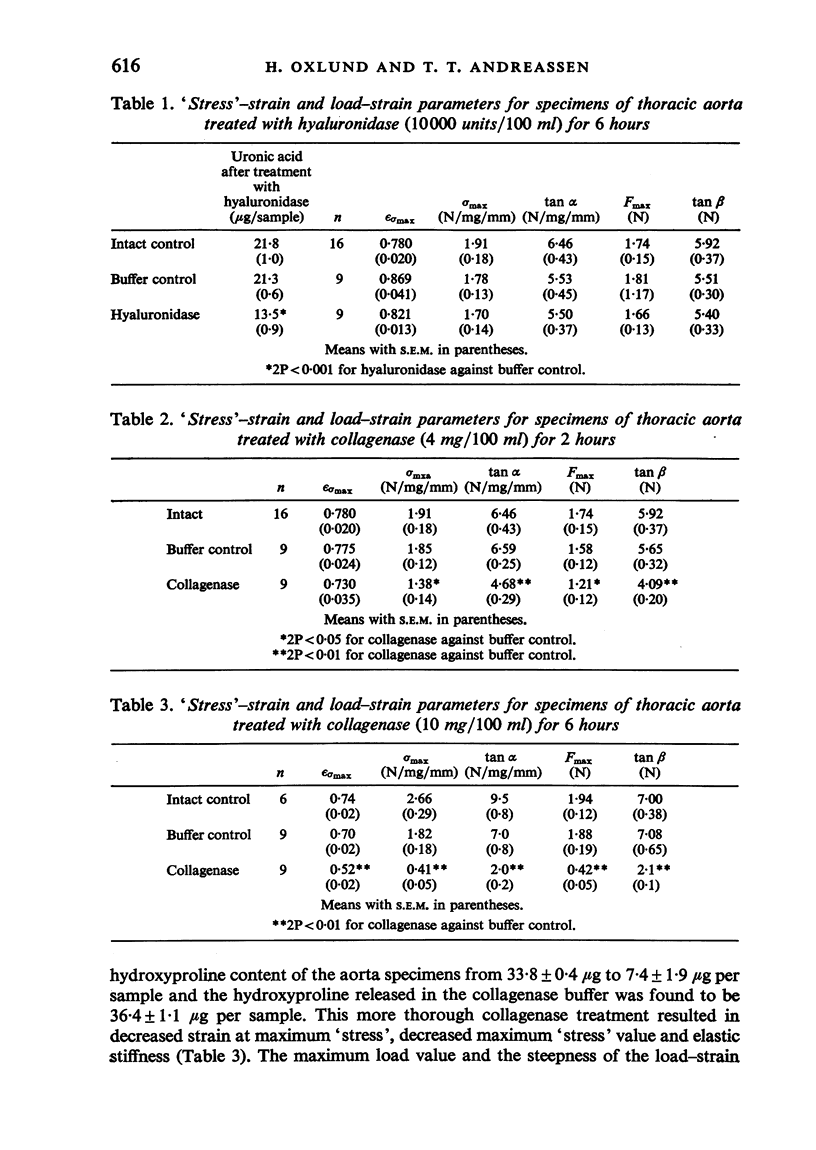
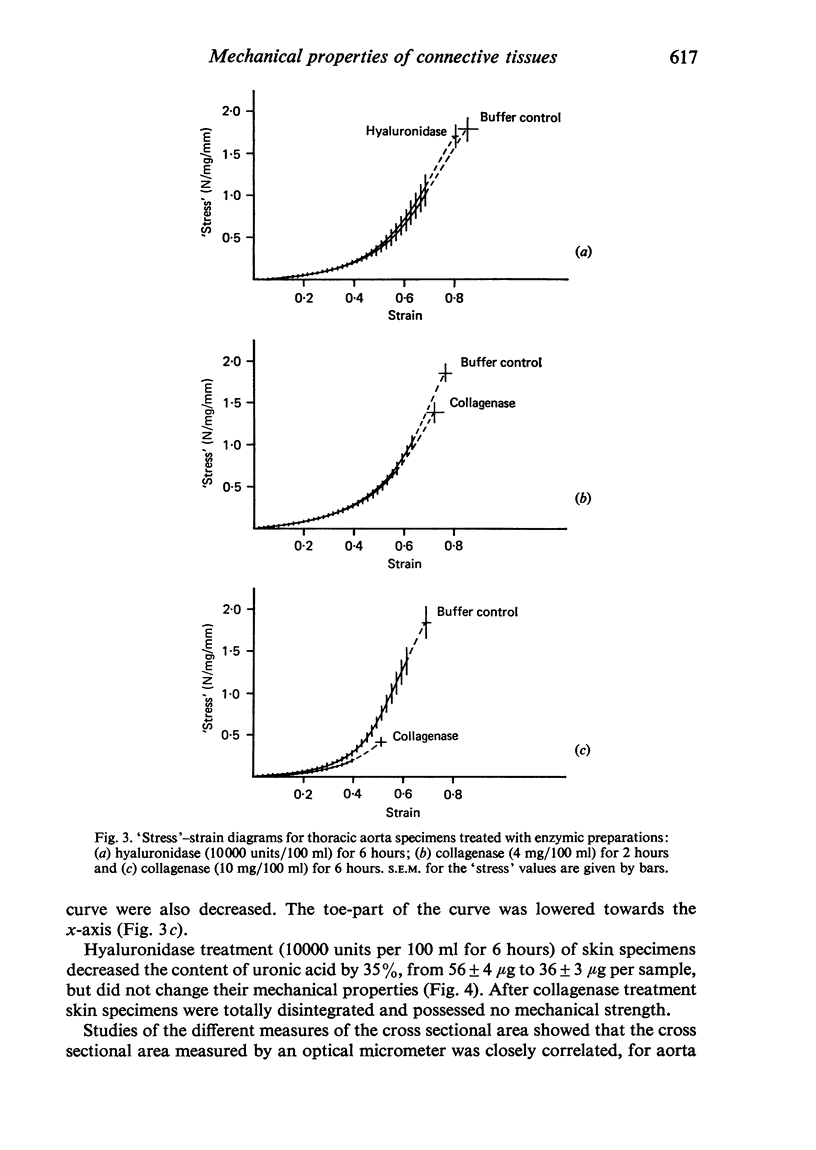
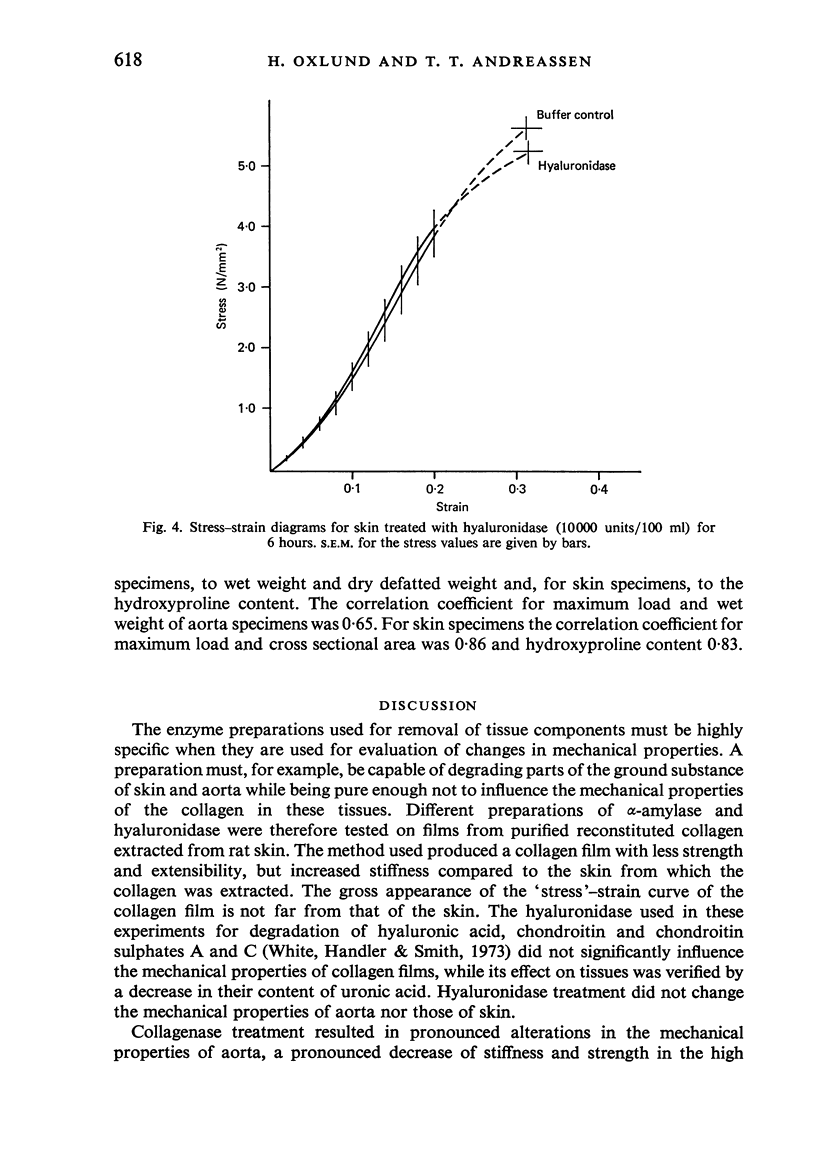
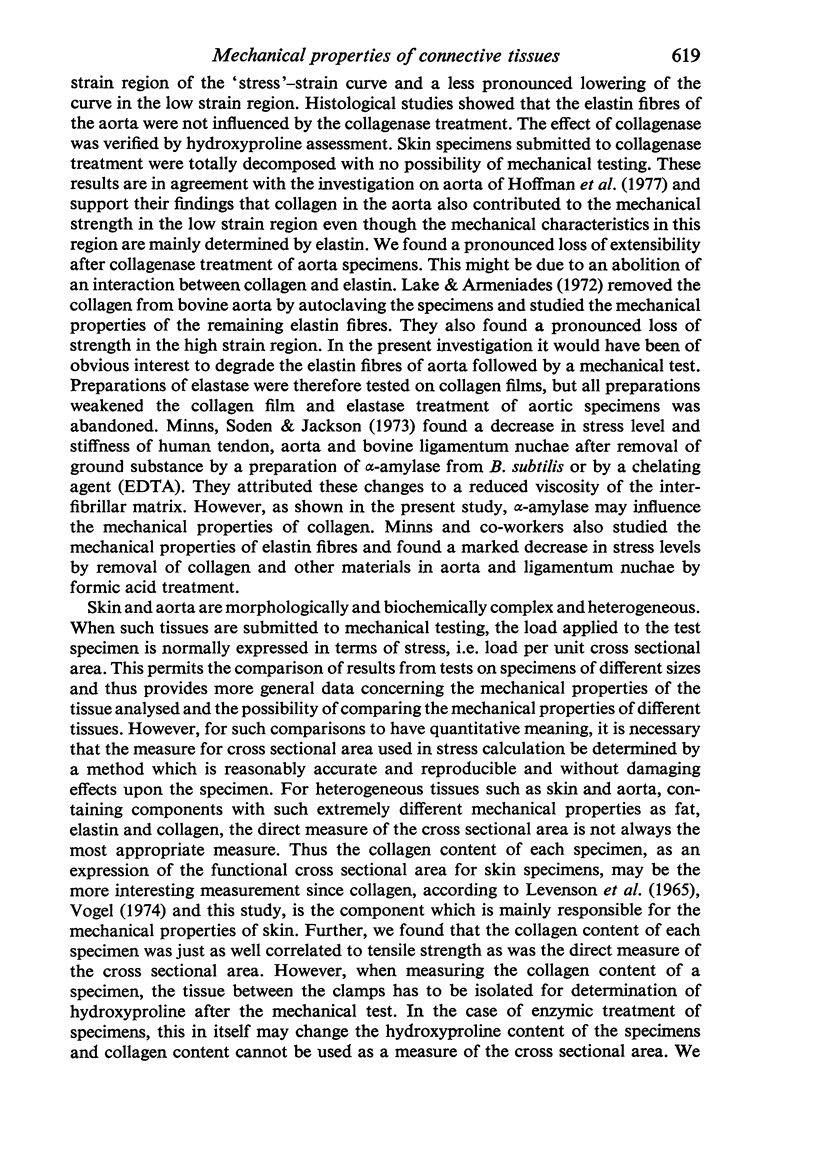
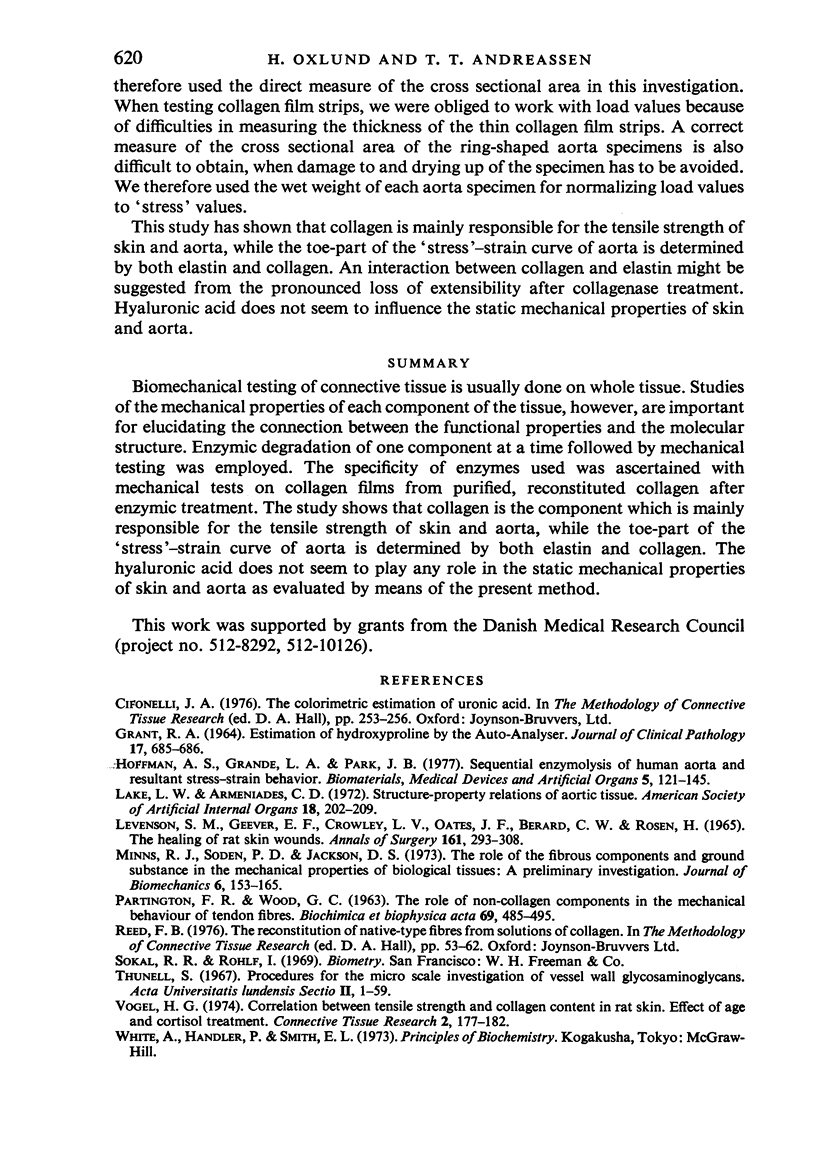
Selected References
These references are in PubMed. This may not be the complete list of references from this article.
- GRANT R. A. ESTIMATION OF HYDROXYPROLINE BY THE AUTOANALYSER. J Clin Pathol. 1964 Nov;17:685–686. doi: 10.1136/jcp.17.6.685. [DOI] [PMC free article] [PubMed] [Google Scholar]
- Hoffman A. S., Grande L. A., Park J. B. Sequential enzymolysis of human aorta and resultant stress-strain behavior. Biomater Med Devices Artif Organs. 1977;5(2):121–145. doi: 10.3109/10731197709118669. [DOI] [PubMed] [Google Scholar]
- LEVENSON S. M., GEEVER E. F., CROWLEY L. V., OATES J. F., 3rd, BERARD C. W., ROSEN H. THE HEALING OF RAT SKIN WOUNDS. Ann Surg. 1965 Feb;161:293–308. doi: 10.1097/00000658-196502000-00019. [DOI] [PMC free article] [PubMed] [Google Scholar]
- Lake L. W., Armeniades C. D. Structure-property relations of aortic tissue. Trans Am Soc Artif Intern Organs. 1972;18(0):202–209. doi: 10.1097/00002480-197201000-00052. [DOI] [PubMed] [Google Scholar]
- Minns R. J., Soden P. D., Jackson D. S. The role of the fibrous components and ground substance in the mechanical properties of biological tissues: a preliminary investigation. J Biomech. 1973 Mar;6(2):153–165. doi: 10.1016/0021-9290(73)90084-5. [DOI] [PubMed] [Google Scholar]
- PARTINGTON F. R., WOOD G. C. The role of non-collagen components in the mechanical behaviour of tendon fibres. Biochim Biophys Acta. 1963 Mar 5;69:485–495. doi: 10.1016/0006-3002(63)91298-8. [DOI] [PubMed] [Google Scholar]
- Vogel H. G. Correlation between tensile strength and collagen content in rat skin. Effect of age and cortisol treatment. Connect Tissue Res. 1974;2(3):177–182. doi: 10.3109/03008207409152242. [DOI] [PubMed] [Google Scholar]


